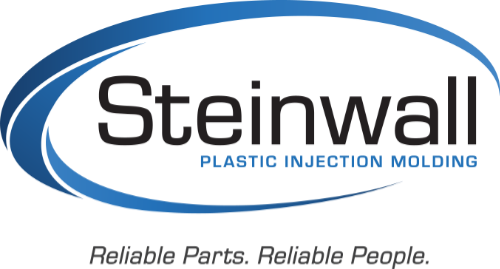Plastics News, Roger Renstrom
Anaheim, Calif. — A Steinwall Inc. study determined that parts injection molded with additive manufacturing (AM) tools can perform comparably to parts made on a P20 steel tool.
Progress with AM technology allows development of the tools at lower cost and shorter lead time for limited runs.
Jeremy Dworshak, research and development manager for Steinwall in Coon Rapids, Minn., presented the study findings during an Antec technical session in Anaheim.
“Additive manufacturing in injection molding has been around for more than 20 years,” demonstrating limited production advantages and lower expense and making “a business case justifiable,” he said.
Additional research could examine the tools’ thermal conductivity, experiment with cooling and attempt to use alternative auxiliary cooling techniques.
For the recent study, investigators used Stratasys Ltd. machines incorporating PolyJet and Fused Deposition Modeling technologies to make tools of Stratasys-supplied epoxy-based FullCure 720 photopolymer, commonly used Digital ABS photopolymer and heat/chemical-resistant Ultem 1010 polyetherimide.
Each tool sequentially processed acetal, polycarbonate and polypropylene on a 55-ton Toshiba electric press until the tool broke or operators observed part failure from flash, short shots or excess pulling.
Each AM tool ran in the manual mode so an operator could apply Zero Stick E342 mold release agent from Stoner Inc. between cycles. No mold release was used with the P20 tool.
The FullCure 720 tool cost $500 and took six hours to produce. The Digital ABS cost $550 and took six hours. The Ultem 1010 cost $800 and took nine hours. And the P20 tool cost $2,000 and took four weeks.
By material, the Digital ABS tool, for example, molded 250 PP parts, 150 acetal parts and 40 PC parts. The P20 tool molded more than 2,000 parts.
Dworshak said future plans are advancing to blend AM benefits toward meeting injection molding demands.
The study investigated three AM tools with an understanding that many other concepts are available.
In addition to Dworshak, credits for the paper go to Steinwall employees Jake Nelson, James LaValle and Brian Kautzman; Eric Johnson with Deere & Co.’s technology innovation center in Moline, Ill.; Chad Ulven with North Dakota State University’s department of mechanical engineering; and biocomposite material designer and compounder c2renew Inc. of Fargo, N.D.
Deere and c2renew assisted in tool making and mechanical testing.
